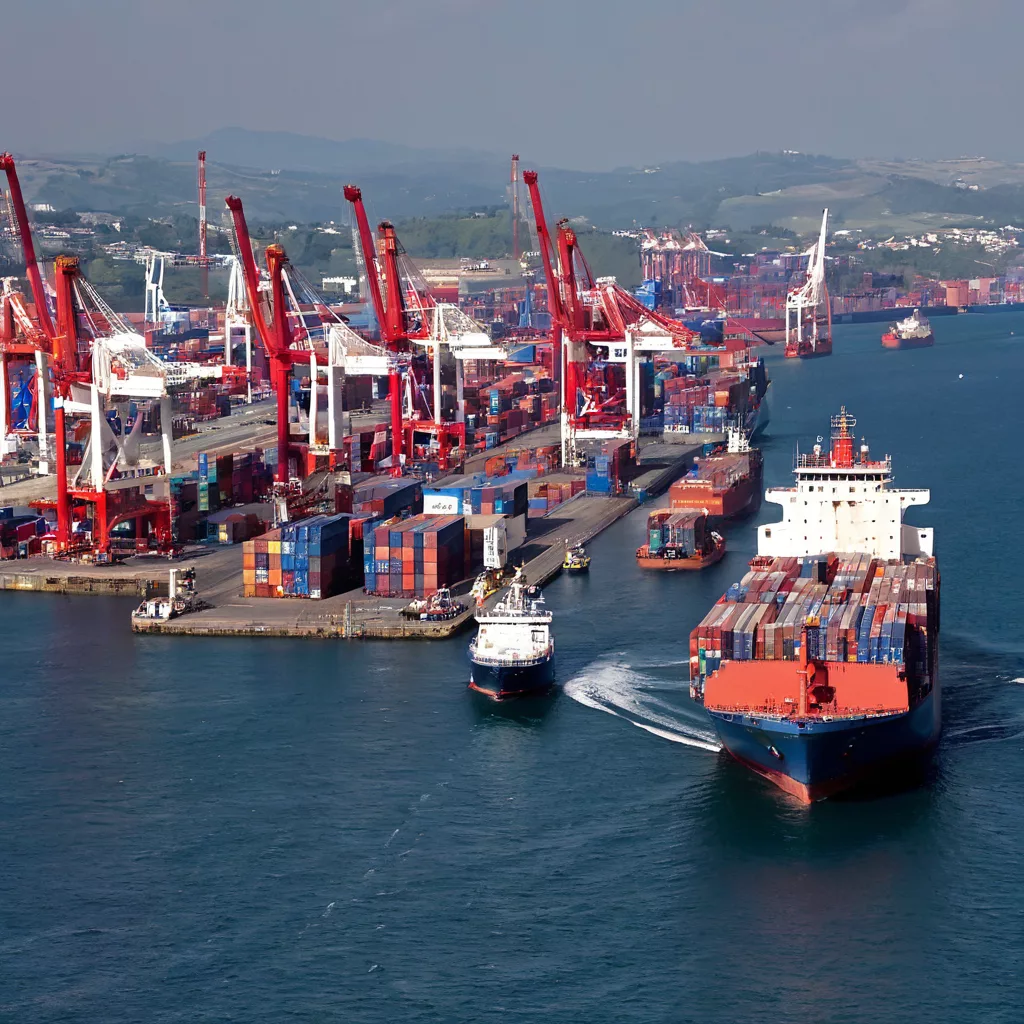-
The EU–USA Tariff Deal: Sectoral Setback for Europe
Overview
On July 27, 2025, the European Union and the United States finalized a landmark trade agreement that capped U.S. tariffs on most EU goods at 15%, averting a previously threatened 30% escalation.
In return, the EU committed to significant energy purchases and investment flows into the U.S., while removing tariffs on select American exports. While the deal stabilizes transatlantic relations and offers strategic benefits, it also introduces sector-specific challenges for the EU economy.

Negative Impacts of the 2025 EU-USA Tariff Deal on EU Industry Sectors 1. Automotive Industry: A Competitive Blow
Tariff Impact: U.S. tariffs on EU automobiles remain at 15%, down from the threatened 30% but still above the pre-deal 10%
Negative Effects:
- German automakers like BMW, Mercedes-Benz, and Volkswagen face reduced competitiveness in the U.S. market.
- Electric vehicle exports, a growing EU strength, may lose ground to U.S. and Asian rivals due to higher landed costs.
- Supply chain disruptions could arise as EU-based parts suppliers face similar tariff burdens.
2. Steel and Aluminum: A Sector Under Siege
Tariff Impact: U.S. tariffs on EU steel and aluminum remain at 50%, unchanged from earlier hikes
Negative Effects:
- Export volumes are expected to decline sharply, especially for Italy, Germany, and Sweden, which are major producers.
- Overcapacity risks in the EU domestic market could lead to job losses and plant closures.
- Downstream industries (e.g., automotive, construction) may face higher input costs, reducing competitiveness.
3. Pharmaceuticals and Biotech: Asymmetrical Liberalization
Tariff Impact: EU eliminated tariffs on U.S. generic pharmaceuticals, but the U.S. imposed a 15% tariff on EU pharma exports
Negative Effects:
- EU drugmakers (especially in Ireland, Germany, and Belgium) face reduced margins in the U.S. market.
- Innovation funding could be squeezed as profits decline, potentially slowing R&D pipelines.
- Regulatory harmonization remains unresolved, adding non-tariff barriers to market access.
4. Semiconductors and High-Tech Manufacturing: Strategic Setback
Tariff Impact: EU removed tariffs on U.S. semiconductor tools and fabrication equipment; U.S. tariffs on EU tech goods remain at 15%
Negative Effects:
- European chipmakers (e.g., ASML, STMicroelectronics) face higher costs exporting to the U.S., while U.S. firms gain easier access to the EU.
- Technology sovereignty goals of the EU may be undermined by increased reliance on U.S. equipment and investment.
- R&D collaboration could become more one-sided, favoring U.S. firms.
5. Agriculture and Food Processing: Uneven Playing Field
Tariff Impact: EU removed tariffs on niche U.S. agricultural goods (e.g., almonds, whey), while U.S. tariffs on EU food exports rose to 15%
Negative Effects:
- French, Italian, and Spanish food exporters (e.g., wine, cheese, olive oil) face reduced demand in the U.S. due to higher prices.
- Small-scale producers are particularly vulnerable, lacking the scale to absorb tariff costs.
- Market share erosion in premium segments could be long-lasting.
6. Energy and Climate Transition: Strategic Trade-Off
Tariff Impact: EU committed to purchasing $750 billion in U.S. energy, primarily LNG
Negative Effects:
- European energy firms may lose domestic market share to U.S. LNG suppliers.
- Climate goals could be compromised if LNG imports delay investment in renewables.
- Infrastructure costs for LNG terminals and distribution may divert funds from green energy projects.
Conclusion: A Deal of Uneven Gains
While the EU–USA tariff deal prevents a full-blown trade war and secures strategic energy and investment flows, it imposes significant costs on key European industries. The asymmetry in tariff reductions—favoring U.S. exports in pharmaceuticals, semiconductors, and agriculture—raises concerns about long-term competitiveness and industrial sovereignty in the EU.
Questions:
1. Who made the decisions of accepting this kind deal on behalf of EU?
2. Will EU countries and industry sectors simply accept the result?
-
Who wins in the US-Vietnam trade deal?
On July 2, 2025, the United States and Vietnam finalized a new trade agreement involving tariffs. Under the deal, Vietnamese exports to the U.S. will face a 20% tariff, while U.S. goods entering Vietnam will be exempt from tariffs.
From a U.S. perspective, this appears to be a favorable outcome, particularly for former President Donald Trump, who has long emphasized trade deals that benefit American interests. Using 2024 trade figures as a reference:
- U.S. exports to Vietnam totaled $13.1 billion. Assuming Vietnam previously imposed an average tariff of 10%, the removal of this tariff could save U.S. exporters approximately $1.31 billion annually.
- U.S. imports from Vietnam amounted to $136.6 billion. A 20% tariff on these goods could generate $27.32 billion in revenue for the U.S. government.
Combined, these changes represent a potential economic shift of $28.63 billion, which supporters of the deal may view as a significant win for the U.S.
However, the broader implications are more nuanced.
While the tariff exemption may seem beneficial for U.S. exporters, Vietnam is not a major destination for U.S. goods globally. The impact on American businesses may be limited, especially considering existing non-tariff barriers that restrict market access.
Vietnam’s strategy, on the other hand, could be seen as a calculated move. By accepting higher tariffs on its exports, Vietnam may be positioning itself as a more attractive manufacturing hub for companies seeking alternatives to China. With Chinese goods facing tariffs as high as 55% in the U.S., Vietnam’s 20% rate could incentivize U.S. importers to shift sourcing to Vietnamese suppliers.
This could lead to increased foreign investment in Vietnam, particularly from Chinese firms looking to bypass U.S. tariffs by relocating production. The potential outcomes for Vietnam include:
- Growth in manufacturing and exports
- Job creation
- Real estate and infrastructure development
- Overall economic expansion
In this context, Vietnam may emerge as a strategic winner in the ongoing U.S.–China trade tensions.
As the agreement takes effect on July 9, the long-term consequences remain to be seen. Whether this deal marks a decisive victory for either side—or simply a tactical maneuver in a complex global trade landscape—will depend on how businesses and governments respond in the months ahead.
-
Who Really Pays Import Tariffs?
Introduction
Import tariffs are often portrayed as tools to protect domestic industries and penalize foreign producers. However, the reality of who bears the cost of these tariffs is more complex. While governments impose tariffs on foreign goods, the economic burden often falls on domestic actors—consumers, businesses, and even entire industries. This article explores the mechanics of import tariffs and analyzes who ultimately pays for them.
1. The Mechanics of an Import Tariff
An import tariff is a tax imposed by a government on goods brought into the country. It is typically levied at the border and collected from the importer of record—usually a domestic business that brings in foreign goods.
Key Point: The foreign exporter does not directly pay the tariff. Instead, the importer pays it upfront and then decides how to absorb or pass on the cost.
2. Who Pays? The Economic Transmission Chain
A. Importers
- Directly pay the tariff to customs authorities.
- May try to absorb the cost to maintain market share, reducing their profit margins.
- Alternatively, they may pass the cost downstream to retailers or consumers.
B. Consumers
- Often bear the final burden through higher prices on imported goods or goods that use imported components.
- In price-sensitive markets, this can lead to reduced consumption or a shift to lower-quality substitutes.
C. Domestic Producers
- Benefit if tariffs make foreign competitors more expensive.
- However, if they rely on imported inputs, they may face higher production costs, reducing competitiveness.
- In global supply chains, this can lead to inefficiencies and job losses.
D. Exporters (Indirectly)
- Face retaliatory tariffs from other countries.
- May suffer from reduced demand if their goods become targets in a trade war.
3. Case Studies and Empirical Evidence
U.S.–China Trade War (2018–2020)
- Studies found that over 90% of the tariff costs were passed on to U.S. consumers and firms.
- Prices of affected goods rose, and some industries (e.g., agriculture, electronics) experienced supply chain disruptions.
Brexit and UK Tariffs
- UK importers faced higher costs on EU goods post-Brexit.
- Retail prices increased, especially in food and consumer goods, affecting low-income households disproportionately.
4. Sectoral Impact
Sector Tariff Impact Mechanism Who Pays? Retail Higher wholesale prices → higher shelf prices Consumers Manufacturing Costlier inputs → reduced margins or prices Firms and consumers Agriculture Retaliatory tariffs → lost export markets Farmers and exporters Technology Disrupted supply chains → delays, higher costs Firms and end-users 5. Policy Considerations
Governments must weigh the short-term protection of domestic industries against the long-term costs to consumers and economic efficiency. Tariffs can be politically popular but economically regressive, often acting as a hidden tax on the public.
Alternatives:
- Subsidies for strategic industries.
- Trade adjustment assistance for displaced workers.
- Multilateral trade agreements to address unfair practices without unilateral tariffs.








